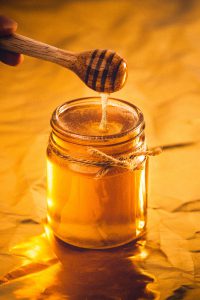Unravelling the Sweet Mysteries: Methods for Analysing Carbohydrates in Honey

Photo by Art Rachen on Unsplash
Honey, nature’s sweet nectar, has been cherished for its flavour and health benefits for millennia. But beneath its golden, sticky exterior lies a complex chemical composition that scientists have been diligently deciphering. One crucial aspect of this composition is carbohydrates, the primary source of honey’s sweetness. Analysing carbohydrates in honey is a vital task that helps us understand its nutritional value and quality. In this editorial, we’ll delve into the methods used in carbohydrate analysis, shedding light on the sweet science behind honey.
Honey’s carbohydrate content primarily consists of two main components: sugars and non-sugar carbohydrates. The sugars include glucose, fructose, and sucrose, while non-sugar carbohydrates comprise a variety of compounds like polysaccharides and oligosaccharides. Analysing these components requires precision and specialised techniques.
High-Performance Liquid Chromatography (HPLC): HPLC is a widely employed method for carbohydrate analysis in honey. It involves separating carbohydrates in a honey sample based on their chemical properties and measuring their concentrations. This method provides detailed information about individual sugar levels and allows for accurate quantification.
Gas Chromatography (GC): GC is often used to analyse volatile compounds in honey, including sugars like glucose and fructose. The technique involves vaporising the sample and separating its components using a chromatographic column. GC can provide information about the sugar profile and detect any potential adulteration.
Spectroscopy Techniques: Infrared (IR) and nuclear magnetic resonance (NMR) spectroscopy are instrumental in identifying and quantifying carbohydrates in honey. IR spectroscopy relies on the absorption of infrared radiation by chemical bonds, while NMR spectroscopy analyses the nuclear properties of atoms in molecules. These methods help in characterising the structural aspects of carbohydrates.
Enzymatic Methods: Enzymatic assays involve the use of specific enzymes that react with sugars to produce measurable products. For example, the phenol-sulphuric acid method relies on the reaction of carbohydrates with phenol and sulfuric acid to form a coloured compound, whose concentration can be quantified spectrophotometrically.
Total Carbohydrate Content Calculation: The total carbohydrate content in honey can be calculated by subtracting the sum of water content, ash, protein, and fat from 100%. This method provides a general estimate of carbohydrates and is often used as a quick assessment of honey quality.
Isotope Ratio Mass Spectrometry (IRMS): IRMS helps detect the presence of C4 sugars like corn syrup, which may be used to adulterate honey. It measures the carbon isotope ratios in the sugars, allowing for differentiation between natural honey sugars and added sugars from other sources.
Meliss palynology: This technique involves the examination of pollen grains in honey, which can provide information about the floral source and geographic origin of honey. While not a direct carbohydrate analysis method, it helps corroborate other analytical findings.
Accurate carbohydrate analysis in honey is crucial not only for determining its authenticity but also for assessing its nutritional value and potential health benefits. Honey is not just about sweetness; its carbohydrate composition plays a significant role in its taste, texture, and crystallisation behaviour. Moreover, understanding the carbohydrate profile of honey is essential for ensuring its purity, as adulteration with cheaper sugars is a concerning issue in the honey industry.
In conclusion, the methods used for analysing carbohydrates in honey are diverse and sophisticated, each serving a specific purpose in unravelling the intricate chemistry of this beloved natural sweetener. These analytical techniques are indispensable tools for beekeepers, food scientists, and regulatory authorities to ensure the quality and authenticity of honey on our tables. As we continue to explore the wonders of honey, these methods will remain indispensable in preserving the sweet mysteries within the golden jars of nature’s gift.
We are here to share current happenings in the bee industry. Bee Culture gathers and shares articles published by outside sources. For more information about this specific article, please visit the original publish source: Unravelling the Sweet Mysteries: Methods for Analysing Carbohydrates in Honey Chromatography Today








